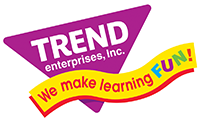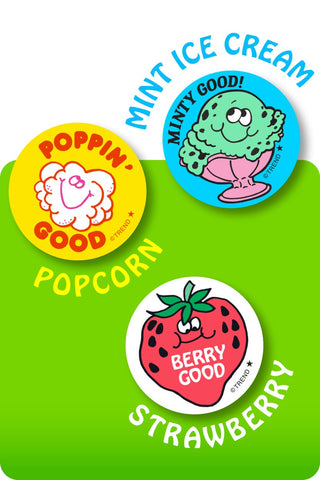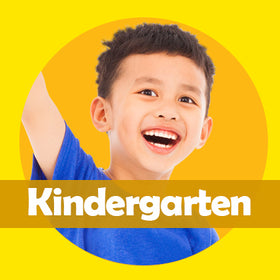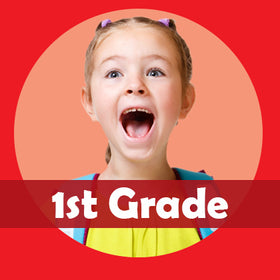
5 Ideas to Make Summer Reading FUN!
Reading rocks! It’s the perfect activity to make connections with characters, encounter different cultures, explore the world, and experience events from outrageous to ordinary. Not only is it fun, reading is a beneficial activity for young learners too. It strengthens vocabulary, improves concentration, builds emotional skills, and more.
Make sure reading continues well into the summer months with these 5 ideas to make reading FUN!
1. Create a Reading Challenge
Start a reading challenge to motivate kids to read in the summer months. Competition can bring out the best in kids – especially when competing against themselves. There are an infinite number of challenge ideas; find one to fit the age and ability of your youngster, and start reading!
Challenge ideas include:
- Read from A to Z: Choose authors’ names or book titles that start with each letter of the alphabet.
- Timed Reading Challenges: Read a number of books or minutes each day/week/month.
- Scavenger Hunt: Challenge kids to read books that contain things like horses, a male main character, outer space themes, a question mark in its title, and so on. They check each item they “find” off the list!
A visible tracking sheet or display reminds kids of their goals and monitors progress. Depending on your space, there are lots of ways to track reading goals:
- Incentive Charts and stickers track group progress or a range of goals.
- Check off your scavenger hunt goals on a checklist.
- For timed reading goals, an Incentive Pad is a simple way to check off each day.
- Changing challenges by the week or month? Announce and track it on a calendar!
- Track a group’s reading goals at home, school, or in a care center with a Playtime Pals™ Goal-Setting Adventures Bulletin Board Set (it’s reusable for many challenges and goals!).
Remember to reward your readers' success:
- Stickers are always an awesome prize! Large sizes, characters, and sparkly smiles will motivate kids to keep turning pages!
- Bookmarks are handy prizes for kids and the blank backs are great for writing special messages or reading lists.
2. Join Reading Clubs & Communities
Make reading social! Though it’s often an independent activity, reading clubs and communities give it a social aspect that can be helpful when encouraging kids to read.
Join an online literature community, like Biblionasium, to connect your child with fellow enthusiasts (with parents’ permission and oversight, of course!). Check if your school has an account or create a new one for your child.
Create a book sharing group with your child’s classmates, friends, or family. Make a check-in/out process using Terrific Pockets™ and Index Cards. This is a handy reminder of who the book belongs to and also gives you (teachers and parents) a convenient list of who has read the book.
Seeing other kids embrace this pastime, hearing what books others are enjoying, and giving their own advice and opinions is sure to motivate occasional and avid readers alike.
3. Read a Variety of Texts
Introduce kids to a variety of genres and text types. This is especially helpful for kids who seem uninterested in reading – perhaps their lack of enthusiasm is related to what they are (or aren’t!) reading.
One joy of summer reading is that there’s flexibility for FUN. Explore genres (fiction, nonfiction, poetry) and text types (chapter books, graphic novels, magazines…). Reading widely helps kids develop their vocabulary and comprehension, and also helps them discover what they like to read and can inspire a lifelong love for reading.
Not sure where to start? Check with a school or local librarian or bookstore for a list of recommendations. They should be able to point you to a variety of texts in up-and-coming and classic choices.
4. Make Reading Time Special
Read together as a family! Set aside time and treat reading as an event in your home (it’s a great replacement for TV time). Choose a story that’s suitable for a range of ages for your family storytime. Take turns reading out loud and have fun talking about what will happen next.
Create a reading spot that is just right for independent reading. Include comfortable seating, a blanket, and other cozy items, and choose a location that is relatively quiet. Kids will love cuddling up in their special place and sinking into a good book.
Taking a book outside for reading time is a fun way to reinforce reading as a choice rather than a chore. Visit a quiet park or favorite spot in your yard and bring a book and a blanket. Spread out in the sunshine, relax, and enjoy some dedicated outdoor reading time.
5. Celebrate the Stories
The star of any good book is the story. Get kids interested in storytelling and appreciating (and seeking out) the twists and turns of a good tale.
If you have an interesting family story that’s been passed through the generations…tell it! Perhaps it is about your family’s origins or how your parents or grandparents met. This is an easy way to spark kids’ interest in the stories of people (biographies, memoirs, autobiographies, historical fiction, and so on). Discover books about the heritage and history of famous leaders and figures of interest to your kids. They’ll love to tell you the story of someone they admire!
Audiobooks are a fun way to incorporate storytelling in place of reading. Try listening to a story on your next road trip or when sitting around a campfire. Listening to stories builds pronunciation and reading comprehension skills, plus it’s a fun way to get kids interested in reading. Listen to the first book in a series, then encourage kids to continue reading the series on their own.
Celebrate the stories behind blockbusters! Research to find a book that inspired a movie. When the whole family has read the book, host a movie night (complete with themed snacks, of course!), and watch the movie version. Compare the stories. Which version did everyone like best? Why? Invite kids to find the next book-turned-movie, and keep reading and watching all summer long!
Looking for tools to jump-start a beginning reader? We're here to help! Shop Sight Words, Skillbooks, and reusable activity books to introduce kids to the alphabet and prepare for reading success.



































































































Leave a comment